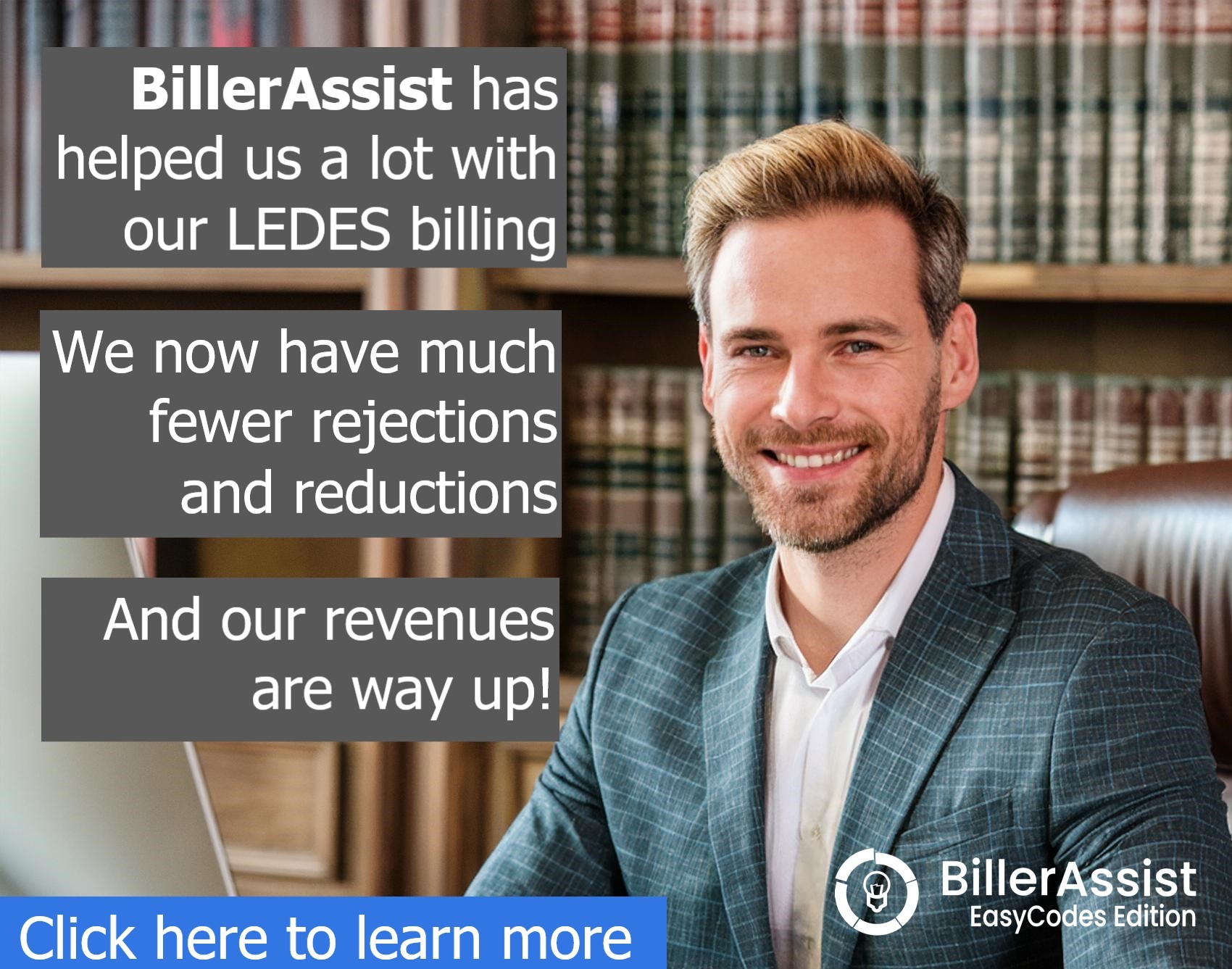Electronic Billing Formats: What Your Firm Needs to Know
Over the past 20 years, a slew of different electronic billing formats has been created to meet varying legal needs.
Unfortunately for law firms, managing these different billing formats can be extremely challenging.
Because of the different electronic billing formats that various different clients require, law firms must frequently switch formats from one client to the next.
This lack of standardization is costly for law firms in both time and money.
Law firms need to know how to use these different billing formats and also find ways to streamline the billing process to accommodate the various formats.
Manually generating invoices in all of these formats can be an absolute nightmare and huge time-suck. However, innovative software solutions can alleviate the financial and time burdens of complying with these various formatting styles, if not eliminating them completely.
Background on E-Billing Formats
The Legal Electronic Data Exchange Standard (LEDES) formats are the most widely used in the industry. LEDES formats have served to standardize the “electronic exchange of billing and other information between corporations and law firms" since their inception in 1995 by the Legal Electronic Data Exchange Standard Oversight Committee (LOC).
The LOC was commissioned by the Uniform Task-Based Management System (UTBMS) to find a way to provide clients and law firms alike with an easy way of expressing and understanding “meaningful cost information on legal services.“
Although neither the UTBMS nor the LOC’s formatting standards are legally required, many companies and especially larger institutions require their use as a condition of hiring a law firm.
LEDES 1998 was the first LEDES formatting style, developed by PricewaterhouseCoopers in 1998. This style was almost immediately replaced by LEDES 1998B, which became extremely popular in the United States but did not gain worldwide use. In fact, Legal IT Innovators Group (LITIG), based in the United Kingdom, developed a more international-focused billing format in 2004. Though it largely used LEDES 1998B as a foundation, it added additional components that allowed it to be used globally.
In 2005, LEDES 1998BI, with its additional ten fields beyond LEDES 1998B, had become the new standard billing format outside the United States.
However, by 2006, the LOC had adopted yet another format, LEDES 2000, as the official standard. This time, the format included 125 subcategories spread across seven main data elements. LEDES 2000's popularity grew in a steady upward trend. The additional data lines made it much easier to accommodate the “complex nature of fee arrangements between corporations and law firms."
LEDES XML became the first recognized budgeting format in 2006. It had 88 data lines divided into six segments. The LOC also recognized a timekeeping attribute format with 44 data points divided into 5 segments a year later.
Numerous other e-billing formats have also been developed, including Examen, Chubb, Legal Solutions Suite (LSS), and many others. These each have their own respective histories, and degrees of adoption.
Challenge of Changing E-Billing Formats
LEDES formatting has changed over the years. For example, LEDES XML format has changed multiple times since 2006. From its original format, LEDES XML 2.0 modified the value calculation, tax itemization, charge arrangements, and allowed numerous vendor tax ID numbers. As the LEDES 2000 format gained popularity, more upgrades were made. Although the revisions don't always completely rewrite the entire format, they often make considerable changes.
The more modifications made to e-billing formats, the more options clients have had. Because each different client may choose a different version, law firms cannot have one standard format. Law firms that do not keep up with these latest format changes might be unable to submit invoices for payment, and will often have invoices rejected for non-compliance.
If a client selects a format that the firm's system does not support, they will need to manually format their invoices, a process that can take many hours for each invoice. A billing assistant can easily spend at least $80 per month on each invoice needing an e-billing format conversion.
Moreover, firms that are unprepared for a new e-billing format will be even more at a disadvantage. Playing catch-up takes time, and time is money.
In addition, using old technology when new versions are available can also give clients the impression that the firm is slow and behind the times.
The Solution
Fortunately, there are automated solutions that can render these problems effectively moot. These applications can automatically convert LEDES from one format to the next so that you don’t have to waste precious time doing it by hand.
To make things even easier, many of these tools link easily with Clio, Rocket Matter, and numerous other popular billing platforms, allowing for even faster invoice conversion and generation. Because these programs are often cloud-based, the data stays “free-flowing" and available from any location.
The ultimate goal in legal services is to satisfy the client. The fact that each client is different might complicate processes, particularly when billing formats are involved.
Fortunately, automated software that converts LEDES formats from one style to another have been developed to alleviate administrative burdens, making it easier and faster to get paid while freeing up time to better serve existing clients.



